Travel Tips
Winter Holiday Food Around the World
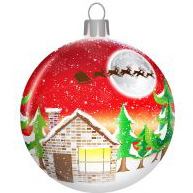 Since American Christmas traditions are a mosaic of Northern European influences, most of us are very familiar with the Dutch-inspired Santa Claus wearing his Scandinavian red suit, driving a Swiss sleigh. We sing carols from England and Australia, and gather around lighted German trees. But winter festivals are universal. Virtually every culture has a celebration in the darkest months of winter that brings together friends and family to welcome the new year, which is usually done with copious amounts of food. Here are some winter celebrations and foods from countries that are miles off of Santa’s flight map:
Since American Christmas traditions are a mosaic of Northern European influences, most of us are very familiar with the Dutch-inspired Santa Claus wearing his Scandinavian red suit, driving a Swiss sleigh. We sing carols from England and Australia, and gather around lighted German trees. But winter festivals are universal. Virtually every culture has a celebration in the darkest months of winter that brings together friends and family to welcome the new year, which is usually done with copious amounts of food. Here are some winter celebrations and foods from countries that are miles off of Santa’s flight map:
Mongolia – Tsagaan Sar
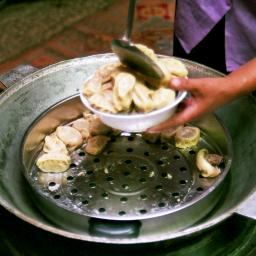 In Mongolia, the first new moon between the end of January and March marks the start of the Tsagaan Sar (“white month” or “white moon”) the beginning of the lunar new year. Throughout the month, family members visit from all corners of the frozen desert and greet each other by layering their palms face-up and asking, “Amar bain uu?” (literally, “are you easy?”) Friends and relatives show off their best deels, which are the traditional long coats in the style of Genghis Khan that many Mongolians still wear with pointed boots and hats.
In Mongolia, the first new moon between the end of January and March marks the start of the Tsagaan Sar (“white month” or “white moon”) the beginning of the lunar new year. Throughout the month, family members visit from all corners of the frozen desert and greet each other by layering their palms face-up and asking, “Amar bain uu?” (literally, “are you easy?”) Friends and relatives show off their best deels, which are the traditional long coats in the style of Genghis Khan that many Mongolians still wear with pointed boots and hats.
Mothers, whether in the urban center of Ulaanbaatar or in gers in the country, start preparing 2-3,000 buuz (mutton dumplings) weeks ahead then leave them outside to freeze until they are ready to be steamed. Over the holiday relatives, neighbors, friends and guests make the rounds to each others’ homes and everyone is treated to buuz, mild milk vodka, biscuits and the boiled hindquarters of a sheep.
Each household has a stacked cake of hard bread, curd and sweets in an odd number of layers called an ol Booy, or “shoe sole cake,” so named because the bread is shaped into long ovals and stamped, resembling shoe soles. Beverages include airag (fermented mare’s milk, often called “white beer”), vodka, and tea with milk. Guests are required to try all the dishes served at dinner, which usually lasts late into the night. Those visiting multiple homes are advised to save room, because they are expected to try everything on the table in those homes too. Click here to learn how to make Buuz.
India – Diwali
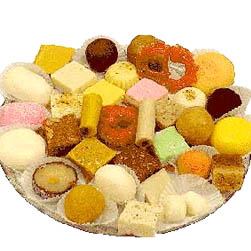 Diwali is a five day festival of lights celebrated in October or November, according to the lunar calendar. There are many regional variations of Diwali, and the myths behind the celebration differ from place to place.
Diwali is a five day festival of lights celebrated in October or November, according to the lunar calendar. There are many regional variations of Diwali, and the myths behind the celebration differ from place to place.
In one, Lord Krishna defeats the demon Narkasur, while in another Lord Rama defeats the demon Ravana. In yet another, Lord Krishna transforms himself into a dwarf to dethrone an evil king.
But the common theme of all of these stories is the triumph of good over evil, and everyone parties afterwards. One legend says that Lakshmi, the Goddess of wealth and prosperity, will only visit houses that are clean and brightly lit, so there are spectacular light and fireworks displays. People light small oil lamps to create flame designs around their houses, and decorate their doors with richly colored rangoli patterns.
Fire-crackers and sparklers blaze and pop while families get together to eat and play cards. Gambling during Diwali is considered good luck, since the goddess Parvati played dice with her husband Lord Shiva on Diwali and decreed that those who gamble on that night will prosper throughout the year.
The day before Diwali, houses are cleaned and decorated, ovens are cleaned and smeared with lime, and betel leaves, betel nuts, plantains, fruits, flowers and turmeric powder are set out. Children are anointed with oil and bathe at dawn to avoid unpleasant reincarnations, and receive new clothes and treats.
There is no set dinner menu (though vegetarian curries are common) but neighbors traditionally exchange mithai such as Gajar Ki Kheer. Mithai are sweets molded into colorful shapes and are made from semolina, wheat flour, chickpea flour (or thick milk with coconut), carrots or pumpkin, and spiced with cardamom and nutmeg. Click here for the recipe for Gajar Ki Kheer.
Japan – Kentucki Furaido Kurisumasu
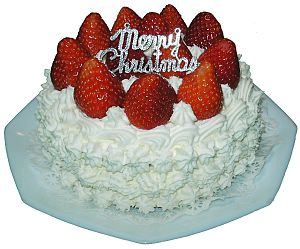 Since Christians make up only 1% of the population, Christmas has virtually no religious significance in Japan. Instead, the American holiday of Christmas has been adopted as more of a romantic and sexy Valentine’s Day known as Romanchikku Kurisumasu (Romantic Christmas). Couples go out for special dates on Christmas Eve (and sometimes to hotel rooms afterward).
Since Christians make up only 1% of the population, Christmas has virtually no religious significance in Japan. Instead, the American holiday of Christmas has been adopted as more of a romantic and sexy Valentine’s Day known as Romanchikku Kurisumasu (Romantic Christmas). Couples go out for special dates on Christmas Eve (and sometimes to hotel rooms afterward).
Families and couples both buy cute, semi-expensive Christmas cakes to celebrate, which are usually sponge cakes decorated with whipped cream frosting and large, whole upturned strawberries that protrude from the cream next to pudgy Santas.
Christmas dinner for most is Kentucky Fried Chicken, just called “Kentucky” in Japan. Don’t expect to whiz through the drive-through though (which would be difficult anyway, as there are no drive-throughs in Japan). Instead, reservations must be made weeks in advance, and people line up around the block to pick up their orders of Christmas Chicken.
The Kentucki Furaido Kurisumasu, or “Kentucky Fried Christmas” began as a marketing ploy by KFC in the 1970s, and now commercials show grinning children ripping into crispy drumsticks every year. Considering most Japanese kitchens feature a toaster oven, or something not much larger, cooking a turkey would be impossible anyway. Click here to make Japanese Christmas Cake.
Finland – Yule

The countdown towards Christmas in Finland begins on the first Sunday of December. Children count the days until Christmas Eve with candy-filled Advent calendars. Christmas isn’t the only winter celebration, though; on December 13, a young girl from each city is chosen to be the Lucia Maiden. She is crowned with candles and leads the Saint Lucia parade which symbolizes light returning on the darkest night of the year.
On Christmas Eve, families often attend Christmas Mass then spend a couple hours in the sauna. Studies show that there are more saunas in Finland than there are cars. Apartments, houses, and even some office buildings come complete with saunas, which are enjoyed by men and women in the nude.
Many families also visit cemeteries to remember the dead (one legend says that spirits of family members rise to use the sauna after sunset on Christmas Eve), and have rice porridge for breakfast with a single almond hidden in one bowl. The person with the almond has to do something silly, like sing a song. Christmas dinner traditionally consists of oven-baked rye-encrusted ham, rutabaga casserole and beetroot salad.
Glogg, a variation on mulled wine, is a big part of Finnish Christmas. Glogg mixes are sold everywhere. An easy recipe is to combine one bottle of glogg mix with one bottle of red wine plus some Finlandia vodka, and heat to almost boiling (boiling diminishes the alcohol content). It is serves in a glass with raisins and almonds. But if you can’t find the Glogg mix, try making it from scratch. Get a great Glogg recipe here.
Armenia – New Year’s Eve
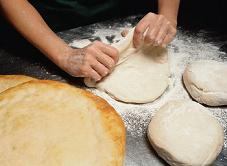 In the fourth century, the Roman Catholic Church switched the date of Christ’s nativity from January 6 to December 25 in order to thwart a pagan feast dedicated to the birth of the sun. Not being a satellite of the Roman Catholic Church, and not having pesky pagans around, the Armenian Church saw no reason to re-mark its calendars and retained the original date.
In the fourth century, the Roman Catholic Church switched the date of Christ’s nativity from January 6 to December 25 in order to thwart a pagan feast dedicated to the birth of the sun. Not being a satellite of the Roman Catholic Church, and not having pesky pagans around, the Armenian Church saw no reason to re-mark its calendars and retained the original date.
Since Christmas comes after New Year’s in Armenia, and since the country was for a long time part of the Soviet Union (which discouraged religious holidays and encouraged civil holidays), New Year’s celebrations are bigger – with more people, more parties, and more food, than Christmas. By contrast, Christmas celebrations are more sedate and religious in nature.
Gifts are always exchanged on New Year’s Eve. Armenian families visit friends and relatives and eat everywhere they go – including their own homes when others come to visit. Visiting hours start in the evening on New Year’s Eve and last until midnight. After that there are large family parties until about 2:00 a.m., followed by more visiting, which continues for several days.
Food is abundant and fresh; dried fruits, nuts, and pomegranates are laid out at every table. After going to church on Christmas Eve, the traditional dinner is seafood – mostly steamed or stuffed trout with fresh herbs and rice pilaf, since red meat is avoided. The traditional dessert is gata – a sweet bread that is sometimes filled with crumbled flour, sugar and butter. Click here for the Gata recipe.
Click here to learn about winter holiday celebrations and light displays around the world.
By Lauren Van Mullem for PeterGreenberg.com












